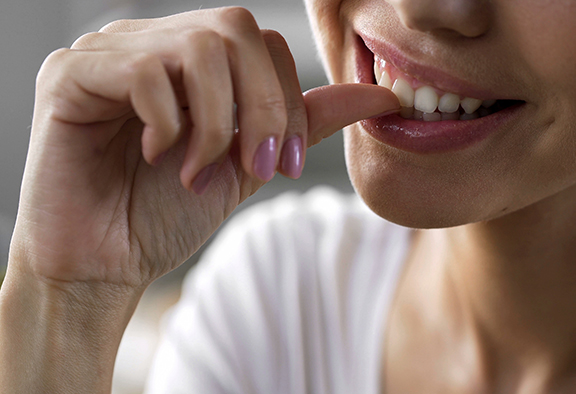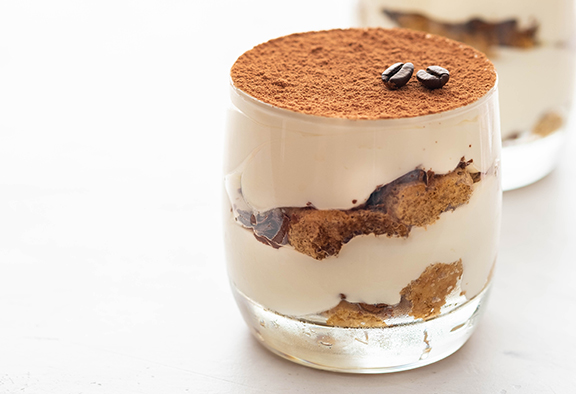July 12, 2021
What Nails Say About Your Health | Health & Wellness
Nails have a great deal to say about your health and keeping a close eye on the health of your entire body is an important step in diabetes management! This article will walk you through the clues that your nails
Share This Story

If you have diabetes, it should come as no surprise to hear that your body can let you know when it’s having problems. This disease comes with no shortage of side effects, such as vision problems and numb legs and feet. But diabetes isn’t the only health issue that bodily changes can indicate. Thus, it’s essential to pay close attention to specific body parts – including your nails.
Nailing Your Health Problems
Knowing that nails can be affected by your overall health isn’t that strange when you think about it. They’re a part of your body, after all, so it’s reasonable to expect that they’d be just as susceptible to change as any other body part. However, people often ignore the valuable feedback provided by their nails, which is unfortunate since they can serve as an early indicator of significant health problems.
If you haven’t thought about what your nails could be telling you recently, it’s time to change that. In this article, we’ll take a look at the links between nails and health.

When Nails Grow Pale
One way nails can react to bodily changes is by changing color, and that’s true whether the changes in question are harmful or harmless. If you’re over the age of 60 and your nails are looking lighter in color than they used to, don’t worry too much about it – one survey found that three out of four people in this age group had pale nails.
White Nails
That said, light-colored or white nails can also hint at health problems. That’s particularly true if all your nails are entirely white, except for a thin pink band at the top of your nail bed. This symptom is called “Terry’s nails,” which can point to diseases like chronic kidney failure, congestive heart failure, and liver cirrhosis. On the other hand, Terry’s nails can appear as a part of age-related nail lightening or even genetic traits. In any case, if your nails meet this description, ask your healthcare provider about it to be sure.
Yellow Nails
There are a myriad of reasons why nails can turn yellow. There’s a good chance that you’ve already taken action to deal with one of these reasons – yellow nails are a potential symptom of diabetes. Other possible causes are wide-ranging, and anything from fungal infections, to tobacco usage, to psoriasis, to thyroid issues may be the culprit.
Blue Nails
Like yellow nails, there’s no single reason why your nails may be feeling blue. However, there are some health issues you should be on the lookout for:
- Silver Poisoning: If you work with silver or use it as alternative medicine, blue nails may signify silver poisoning (AKA “argyria”). Silver deposits can manifest in your nail beds earlier than other parts of your body since they have no pigmentation. If silver exposure continues, these deposits may become visible elsewhere.
- Medications: A handful of medications can cause a similar-looking change in your nail beds, too. Drugs that can have this side effect include antimalarial drugs, antipsychotic drugs (or “phenothiazines”), and a drug called “amiodarone” used for heartbeat regulation.
- Occupational Hazards: Even if you don’t work with silver, your job could be responsible for your changing fingernails. Be aware of this possibility if you work as a mechanic or in any role involving paint removers, metal cleaners, or the making of dyes/inks.
- HIV Infection: There are two separate ways HIV can lead to the development of blue nails. Blue nails are a symptom of HIV infection, but certain antiretroviral medicines may also cause them.
- Cyanosis: In some cases, your red blood cells may run low on oxygen, potentially due to cold temperatures or extra-high hemoglobin levels. That’s when you could run into cyanosis – a condition that can turn skin under your nails and in your lips/feet a purplish-blue hue. Other causes of cyanosis include asthma, COPD, and pneumonia. In cases where cyanosis is acute, it may be a medical emergency.
Rippled Nails
Have you noticed tiny “pits” in your nails? The cause of this could be psoriasis of the nail. Meanwhile, ripples in your nails could indicate irritant dermatitis, allergic contact dermatitis, or atopic dermatitis affecting your fingertips.
Split or Cracked Nails
Paleness isn’t the only nail-related change commonly affecting senior citizens – brittle nails are associated with aging, too. Aside from this, there are all sorts of potential causes for cracked nails. These include diseases, trauma to the nail, and medications.
How To Prevent Brittle Nails
Want to ensure your nails won’t become brittle later in life? Your best bet is to start taking supplements – amino acids, vitamins (especially biotin), and minerals like zinc can all help.
Puffy Nail Fold Infection (Paronychia)
Unlike the other conditions we’ve discussed in this article, this deals with the nail fold, or the skin surrounding your nail’s edge. “Paronychia” is the medical term for swollen, puffy nail folds. In some cases, this can be the result of an infection. When it’s chronic, though, you likely have a chemical irritation or have your hands in water much of the time. It’s also worth noting that people with diabetes are particularly susceptible to paronychia.
Prevention and Treatment
Since several factors can cause paronychia, it stands to reason that there are multiple solutions, too. For treatment, ask your healthcare provider about using steroid creams or pills. Or, to help prevent the condition, wear waterproof rubber gloves to protect your hands from chemicals and water.
Dark Lines Beneath the Nail
A few different factors can cause brown or black lines that run the entire length of your nail. However, this color is part of the nail matrix under the nail fold. To make sure this condition isn’t the result of skin cancer, you may need to undergo a biopsy.
Chewed Nails
If the health conditions discussed in this article have made you anxious, you might be biting your nails – but try not to! Along with making your nails look unkempt, nail-biting can lead to various health issues, including everything from jaw pain to stomach pain. It could even introduce intestinal parasites to your system, so if you’re having trouble breaking this habit, reach out to a dermatologist, dentist, or psychiatrist.
White Spots on Nails
In most cases, the cause of white spots on nails is slight trauma to the nail. These spots should eventually grow out of the nail, at which point you can clip them. White spots can be present from birth as a hereditary condition, too.
Horizontal Grooves or Gaps (Beau’s Lines)
The most common nail-related symptom of systemic disease is Beau’s lines, which are one or more horizontal depressed bands/gaps in the nail. Since these lines appear so often, though, it’s challenging to know what disease may have caused them. Other causes can include anything from heart attacks to nail trauma.
Pale Horizontal Bands (Muehrcke’s Lines)
Are your fingernails (but not your thumbnails) crossed by one or more thin, pale bands? These are “Muehrcke’s lines,” and the cause is likely low albumin in your bloodstream. Since most of the protein in human blood is albumin, low amounts of it can have significant consequences. Don’t wait to ask your doctor for more information.
Clubbed Nails
AKA “drumstick fingers,” nail clubbing is a condition where nails grow in a bulblike shape. In most cases, this is unrelated to other problems, but it can also point to heart disease or lung cancer. Make sure to get a professional diagnosis if you have clubbed nails!
Get More Health Tips From US MED
Whether you’ve paid close attention to the condition of your nails for years or you haven’t considered the links between nails and health before now, nails have a great deal to say about your health. We hope this article has provided you with some valuable information to keep in mind for the future.
Would you like to find additional health tips from US MED? If so, take a look at our official blog!







